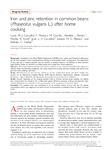Use este identificador para citar ou linkar para este item:
http://www.alice.cnptia.embrapa.br/alice/handle/doc/931449Registro completo de metadados
| Campo DC | Valor | Idioma |
|---|---|---|
| dc.contributor.author | CARVALHO, L. M. J. | pt_BR |
| dc.contributor.author | CORRÊA, M. M. | pt_BR |
| dc.contributor.author | PEREIRA, E. J. | pt_BR |
| dc.contributor.author | NUTTI, M. R. | pt_BR |
| dc.contributor.author | CARVALHO, J. L. V. | pt_BR |
| dc.contributor.author | RIBEIRO, E. M. G. | pt_BR |
| dc.contributor.author | FREITAS, S. C. | pt_BR |
| dc.date.accessioned | 2012-08-17T11:11:11Z | pt_BR |
| dc.date.available | 2012-08-17T11:11:11Z | pt_BR |
| dc.date.created | 2012-08-17 | pt_BR |
| dc.date.issued | 2012 | pt_BR |
| dc.identifier.citation | Food & Nutrition Research, v. 56, 2012. 15618. | pt_BR |
| dc.identifier.uri | http://www.alice.cnptia.embrapa.br/alice/handle/doc/931449 | pt_BR |
| dc.description | Background: According to the World Health Organization (WHO), iron, iodine, and Vitamin A deficiencies are the most common forms of malnutrition, leading to severe public health consequences. The importance of iron and zinc in human nutrition and the number of children found to be deficient in these nutrients make further studies on retention in cooked grains and cooked bean broth important. Objectives: This work aimed to evaluate iron and zinc retention in six common bean (Phaseolus vulgaris L.) cultivars under the following conditions: raw beans, regular pot cooking, pressure cooking, with and without previous water soaking, and broth. Design: Determination of iron and zinc content in the raw, cooked bean grains and broth samples was carried out by Inductively Coupled Plasma (ICP) Optical Emission Spectrometry (Spectro Analytical Instrument Spectroflame P). All experiments and analyses were carried out in triplicate. Results: Overall, regardless of the cooking method, with or without previous water soaking, the highest zinc concentration was found in the cooked bean grains. However, pressure cooking and previous water soaking diminished iron retention in the cooked grains, while increasing it in the bean broth. Conclusion: The common bean was confirmed to be an excellent source of iron and zinc for human consumption, and it was suggested that beans should be consumed in a combined form, i.e. grain with bean broth. | pt_BR |
| dc.language.iso | eng | eng |
| dc.rights | openAccess | eng |
| dc.subject | Deficiências minerais | pt_BR |
| dc.subject | Métodos de cozimento | pt_BR |
| dc.subject | Micronutrientes | pt_BR |
| dc.subject | Análise de alimentos | pt_BR |
| dc.subject | Composição alimentar | pt_BR |
| dc.title | Iron and zinc retention in common beans (Phaseolus vulgaris L.) after home cooking. | pt_BR |
| dc.type | Artigo de periódico | pt_BR |
| dc.date.updated | 2016-02-22T11:11:11Z | pt_BR |
| dc.subject.thesagro | Feijão | pt_BR |
| dc.subject.thesagro | Leguminosa | pt_BR |
| riaa.ainfo.id | 931449 | pt_BR |
| riaa.ainfo.lastupdate | 2016-02-22 | pt_BR |
| dc.identifier.doi | 10.3402/fnr.v56i0.15618 | pt_BR |
| dc.contributor.institution | LUCIA MARIA JAEGER DE CARVALHO, UFRJ; MARIANA M. CORRÊA, UFRJ; ELENILDA J. PEREIRA, UFRJ; MARILIA REGINI NUTTI, CTAA; JOSE LUIZ VIANA DE CARVALHO, CTAA; EDIANE M. G. RIBEIRO, UFRJ; SIDINEA CORDEIRO DE FREITAS, CTAA. | pt_BR |
| Aparece nas coleções: | Artigo em periódico indexado (CTAA)  | |
Arquivos associados a este item:
| Arquivo | Descrição | Tamanho | Formato | |
|---|---|---|---|---|
| 2012034.pdf | 293,59 kB | Adobe PDF |  Visualizar/Abrir |









